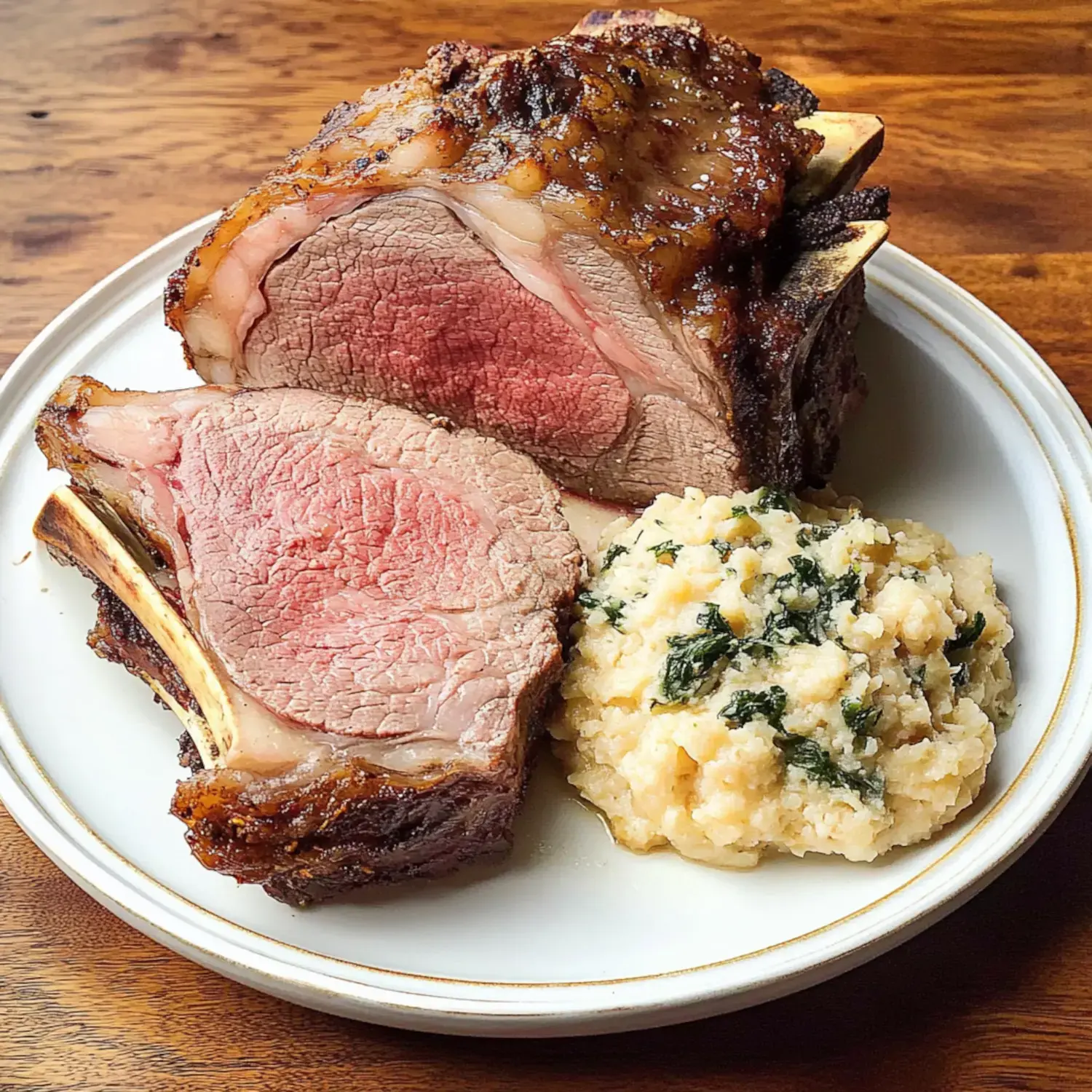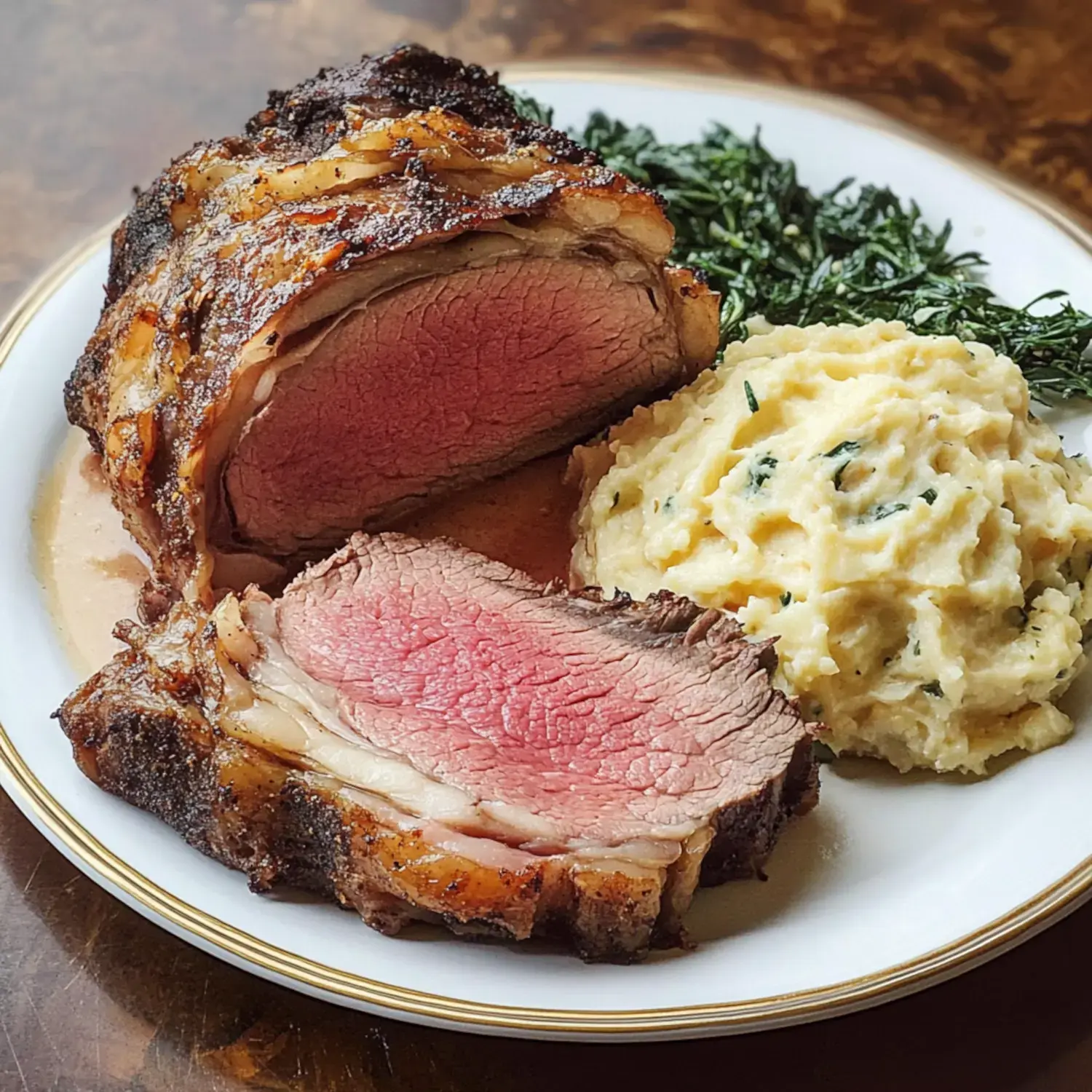 Pin it
Pin it
Our family holiday meals revolve around my now-famous prime rib. Picture a deep brown crispy exterior that breaks open to reveal juicy pink meat – it's simply magical. I've tweaked this method for years, and trust me, creating this stunning main dish comes down to proper technique and taking your time.
Why This Method Stands Out
The magic happens when you blast it with high heat first, then switch to slow cooking. This approach hasn't let me down yet – you'll get that amazing outer crust while the inside stays perfectly juicy. Guests always think I've spent hours slaving away, but between us, it's actually pretty straightforward.
Getting to Know Prime Rib
The beauty of prime rib comes from ribs 6-12, the most prized section. If you've had ribeye steaks, you've tasted slices of this incredible cut. I find the bones pack in extra flavor, but you can ask your butcher to cut and retie them, making it way easier to slice when done.
Ingredients for Prime Rib
- Prime Rib Roast: For feeding a big group, pick one around 12-16 pounds – it's truly impressive.
- Kosher Salt and Black Pepper: Don't hold back here, they're key to that mouthwatering crust.
- Optional Aromatics: Some fresh garlic, rosemary and thyme really boost the aroma.
- Butter: When softened and spread on top, it helps create that gorgeous dark crust.
How to Roast Prime Rib
- Step 1 - Prepare the Roast
- Take your meat out and let it sit for 2 hours, coating thoroughly with salt and pepper immediately after pulling it from the refrigerator.
- Step 2 - Oven Sear
- Heat your oven to 500°F and roast for about 15 minutes to kickstart that amazing crust formation. Remember to switch the exhaust fan on.
- Step 3 - Reduce the Temperature
- Lower to 325°F and continue cooking roughly 13 minutes per pound. Check with a thermometer – aim for 115°F for rare or 120-130°F if you want medium.
- Step 4 - Rest and Carve
- You'll need to wait a full 30 minutes before slicing – this seems forever but guarantees perfectly moist meat.
My Winning Tricks
Get to know your butcher – they'll hook you up with the best cut. Always add your seasonings right when the meat leaves the fridge, it really makes a difference. Never skip that resting period, and always rely on a quality meat thermometer for perfect results.
Great Sauce Matches
Nothing beats a dollop of fresh horseradish cream alongside – that cool zip balances the rich meat wonderfully. You can't go wrong with dripping-based gravy either, or just keep things simple with a light au jus that lets the natural flavors shine through.
 Pin it
Pin it
Storing Leftovers
Any extras will stay tasty in your fridge for about 4 days. When it's time to reheat, pour a little beef broth over the slices and warm them slowly in the oven – we don't want to ruin that beautiful pink center we worked so hard to achieve.
Frequently Asked Questions
- → What size prime rib should I get?
- Plan for a pound per person, or one bone for every couple of guests. A 7-pound rib roast generally feeds 6-8 people and leaves room for extras. The bones add extra flavor during cooking.
- → Why does the meat need to sit out first?
- Bringing the meat to room temperature helps it cook more evenly. It also ensures an even seasoning throughout and makes it easier to hit your desired doneness.
- → Is skipping the high-heat sear an option?
- If you don’t sear it, you won’t get that tasty crust, which adds flavor and keeps it juicy. You’ll also miss out on that beautiful browning, but you can skip it if smoke is an issue.
- → Why rest the roast before slicing?
- Resting for at least 30 minutes lets the juices redistribute, so every slice stays moist. The meat will also continue to cook a bit and rise in temperature by 5-10 degrees.
- → Can I prep the horseradish sauce early?
- Absolutely! Make the sauce a day in advance and chill it. This gives the flavors time to intensify. Just stir before serving for best results.
